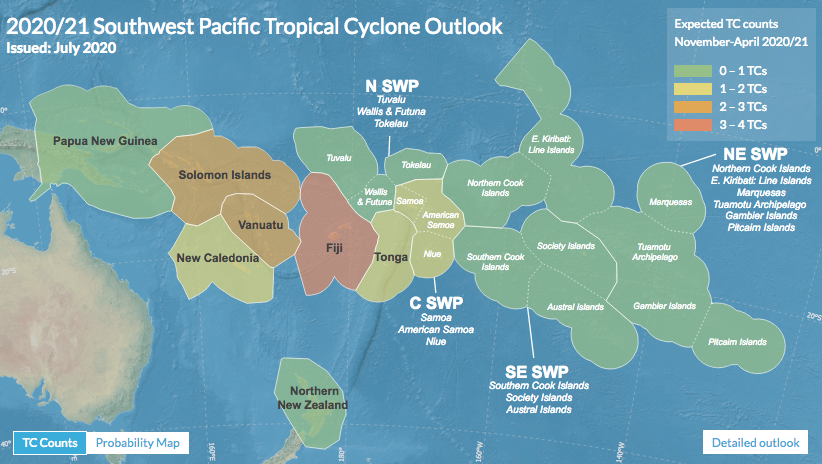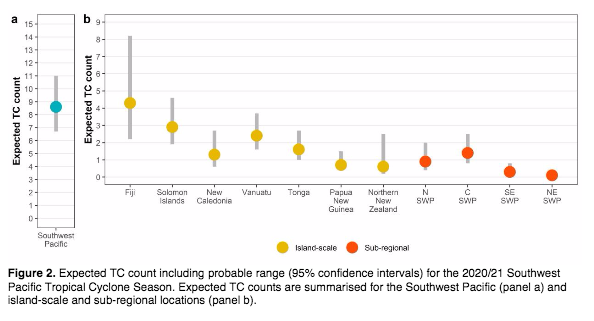
A new tropical cyclone outlook model will generate much earlier predictions for the number of tropical cyclones than current models used in Pacific Island countries, says the University of Newcastle in Australia.
The new model will soon be used in the forecasts of New Zealand’s National Institute of Water and Atmospheric Research (NIWA) and it’s predictions are already displayed on the website for the Tropical Cyclone Outlook for the Southwest Pacific (TCO-SP). According to its current predictions, Tonga should expect one or two cyclones for the upcoming cyclone season (December – April).
Tonga is among six pacific island countries (Vanuatu, PNG, Solomon Islands, New Caledonia, Fiji) that are individually analysed by the model because they are considered in high risk of being struck by cyclones.
Dr Andrew Magee of the University of Newcastle, one of the researchers involved with the development of the model, says that it will give Pacific island countries more time to prepare for cyclones.
“Tropical cyclones are erratic, spatially and temporally, and every season is different. This makes it difficult for island nations and territories to prepare in the weeks and months before the official start of the tropical cyclone season”,
“Our tailored and bespoke tropical cyclone guidance for Pacific Island nations and territories will improve early warnings and support preparations ahead of the tropical cyclone season”,
“This will allow government and aid agencies to prepare enough supplies for the season ahead and will mean that there is more time for decision makers to communicate with communities and people on the ground, allowing for sufficient planning.”


- Finau Fonua



